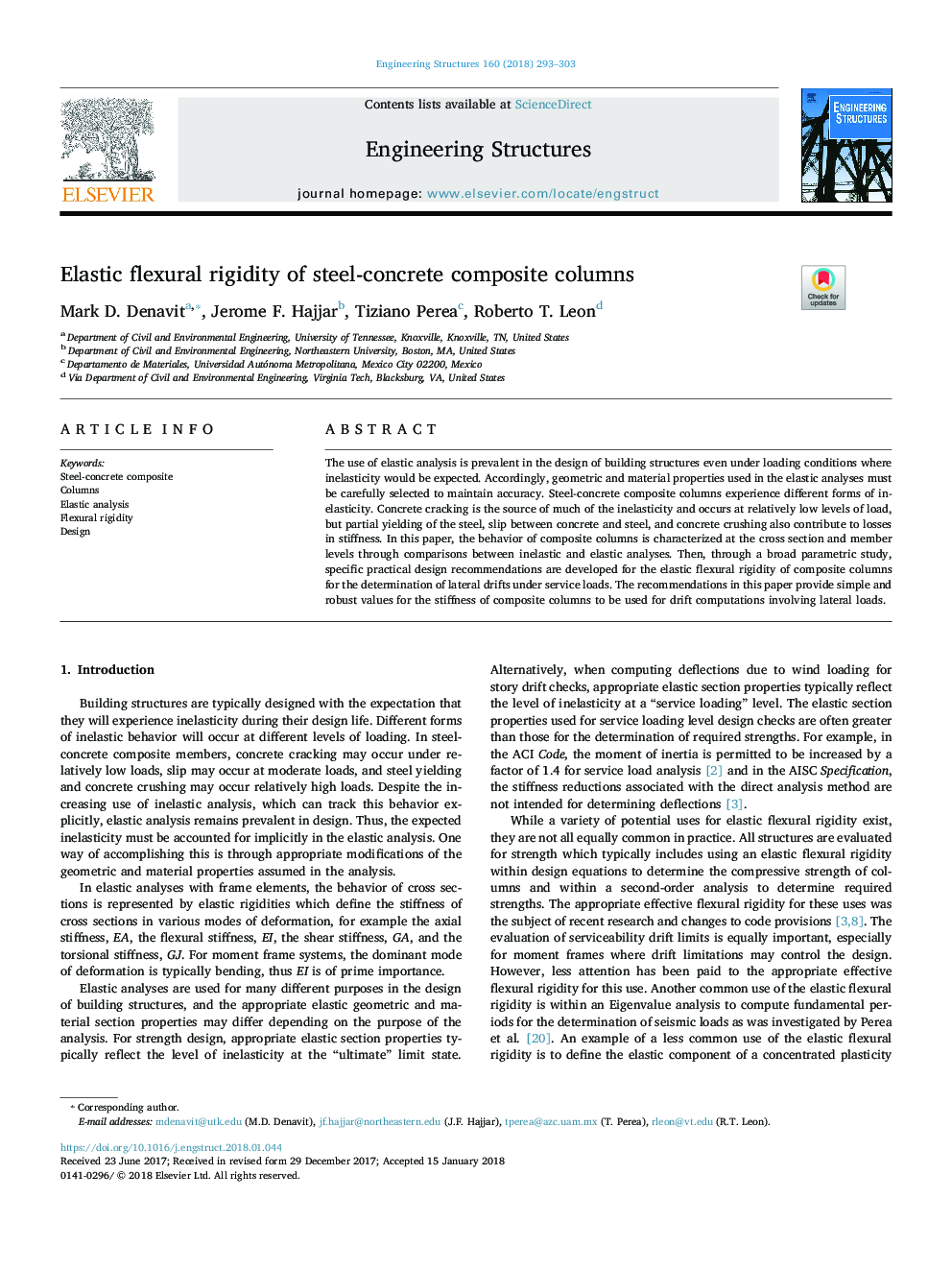| Article ID | Journal | Published Year | Pages | File Type |
|---|---|---|---|---|
| 6738346 | Engineering Structures | 2018 | 11 Pages |
Abstract
The use of elastic analysis is prevalent in the design of building structures even under loading conditions where inelasticity would be expected. Accordingly, geometric and material properties used in the elastic analyses must be carefully selected to maintain accuracy. Steel-concrete composite columns experience different forms of inelasticity. Concrete cracking is the source of much of the inelasticity and occurs at relatively low levels of load, but partial yielding of the steel, slip between concrete and steel, and concrete crushing also contribute to losses in stiffness. In this paper, the behavior of composite columns is characterized at the cross section and member levels through comparisons between inelastic and elastic analyses. Then, through a broad parametric study, specific practical design recommendations are developed for the elastic flexural rigidity of composite columns for the determination of lateral drifts under service loads. The recommendations in this paper provide simple and robust values for the stiffness of composite columns to be used for drift computations involving lateral loads.
Related Topics
Physical Sciences and Engineering
Earth and Planetary Sciences
Geotechnical Engineering and Engineering Geology
Authors
Mark D. Denavit, Jerome F. Hajjar, Tiziano Perea, Roberto T. Leon,
